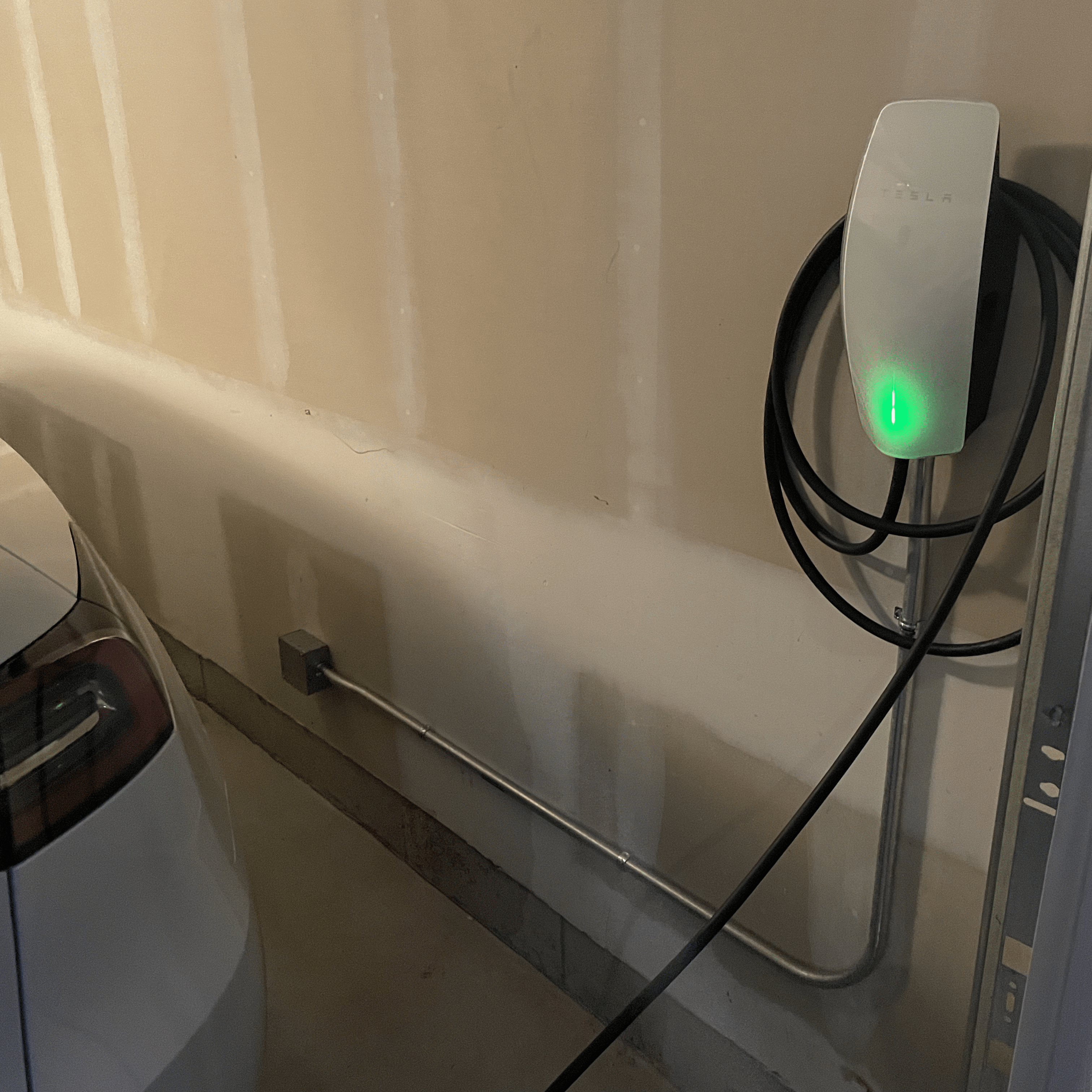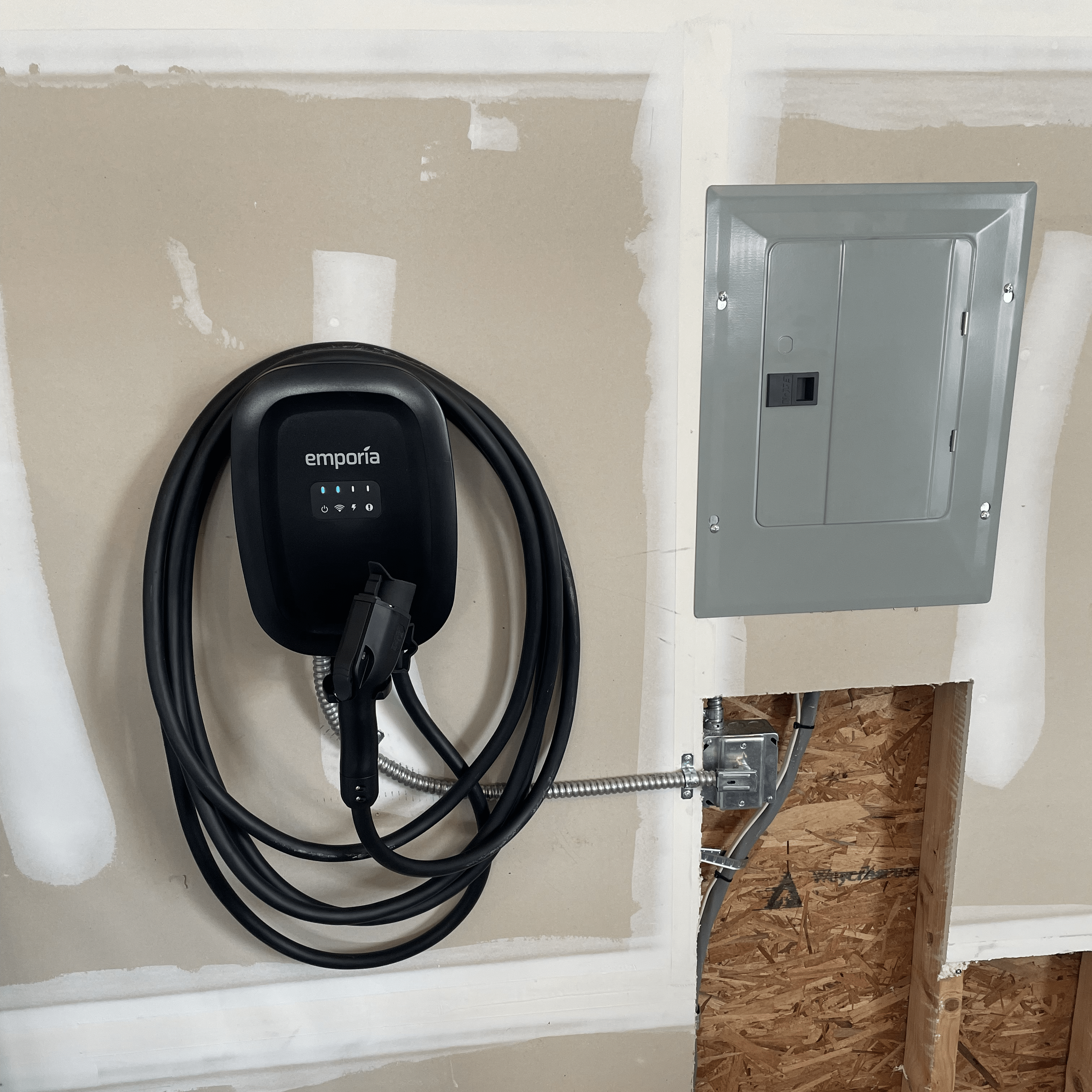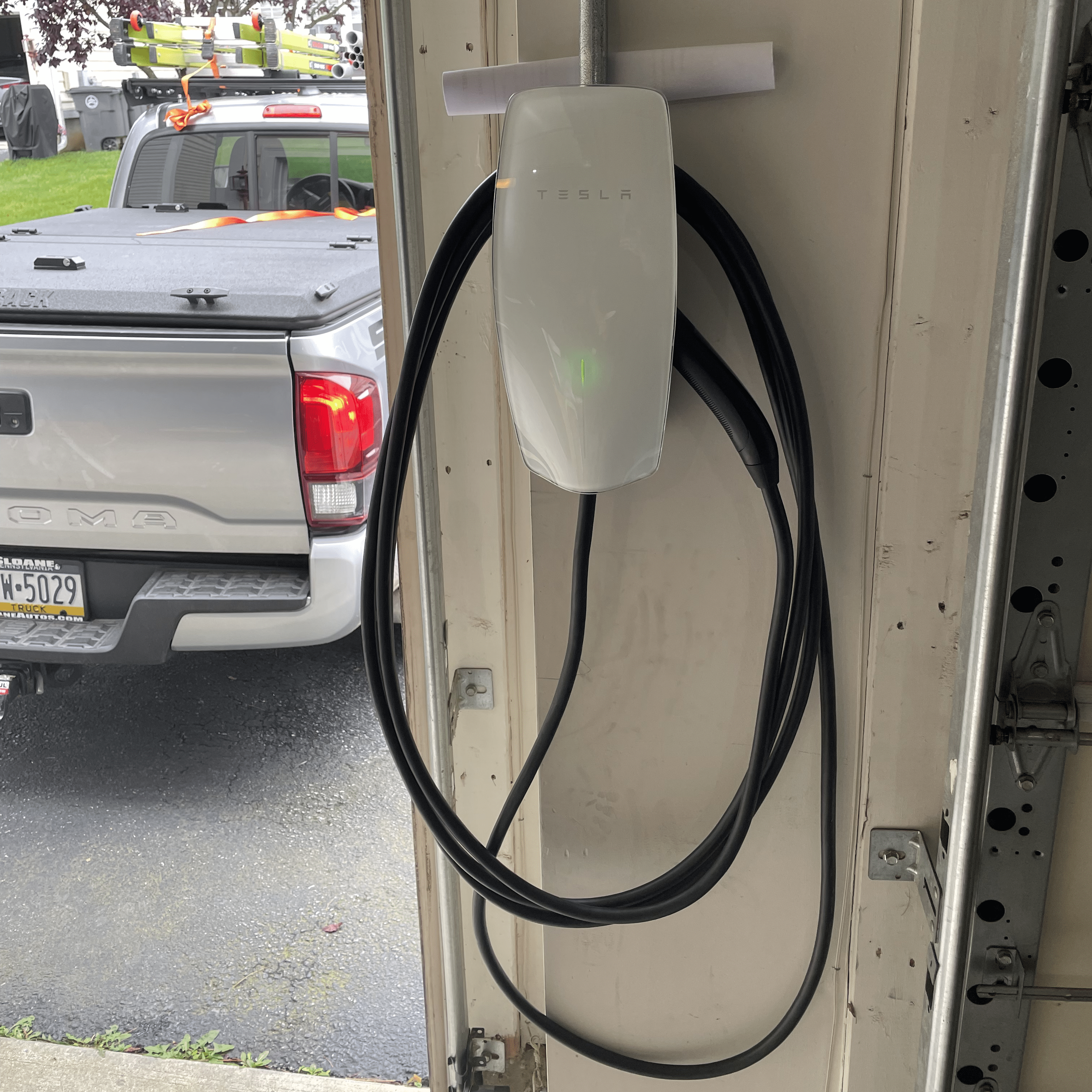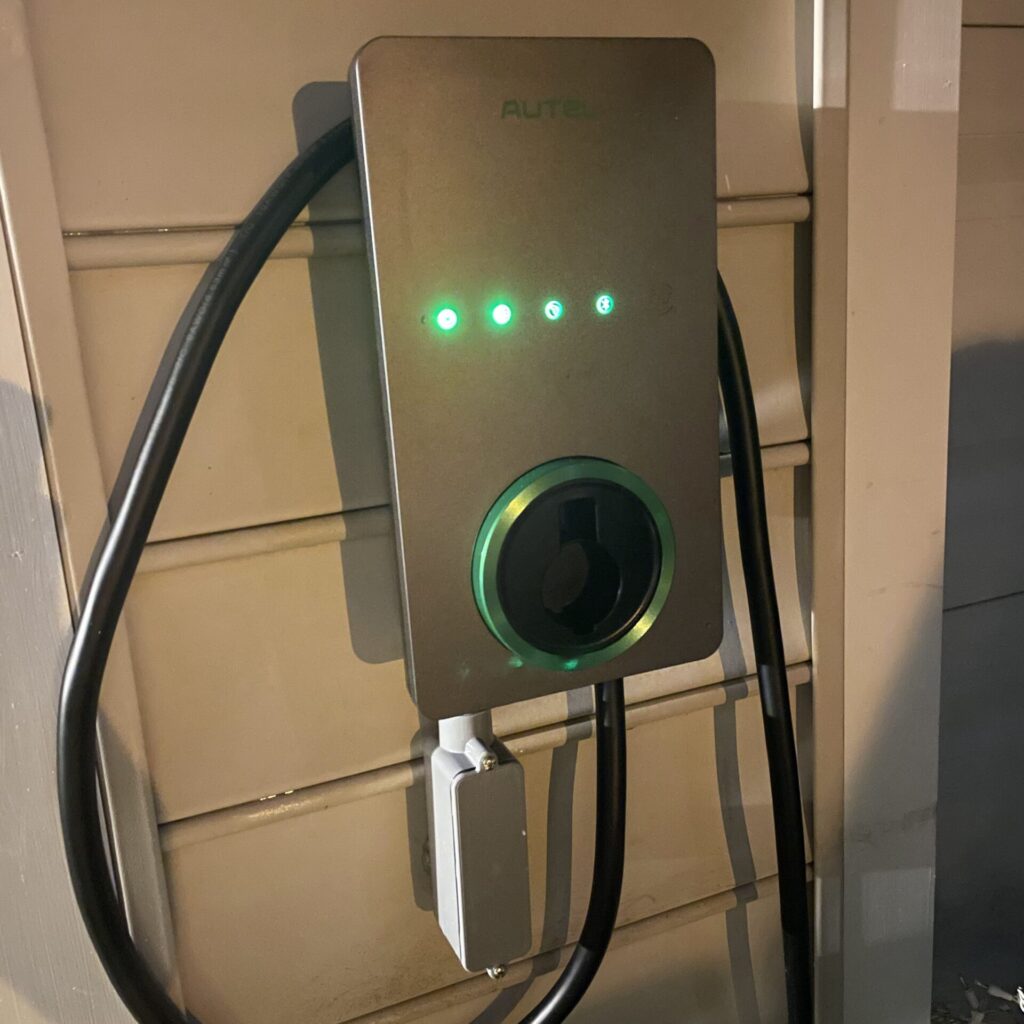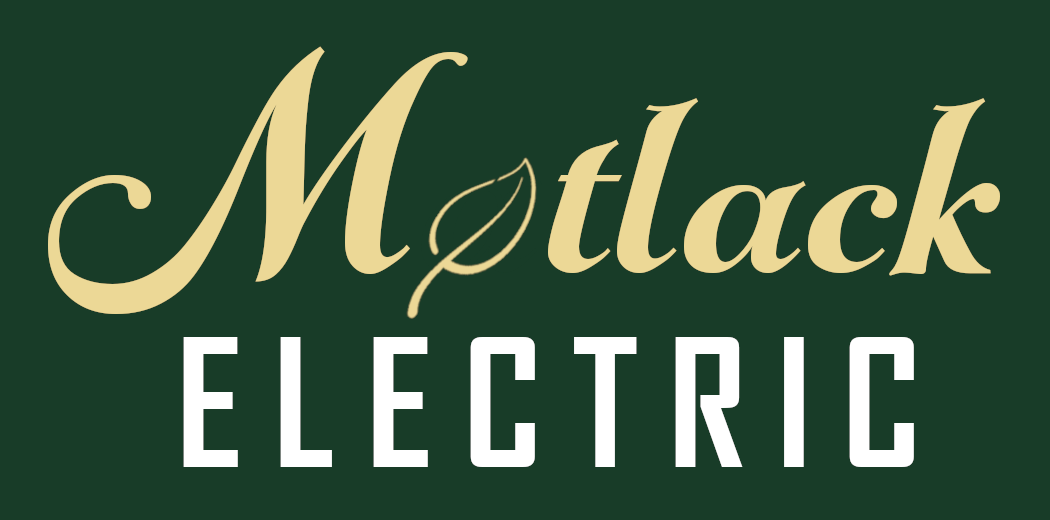Matlack Electric, with its vast experience in EV charger installations for all types of electric vehicles, knows the ins and outs for a flawless setup. Given that EV chargers can be the largest load on your home’s electricity, our expertise is crucial for a safe and high-quality result. Choose us for a knowledgeable, mistake-free installation service.
Things to consider when installing a charger for an electric vehicle…
This info is primarily for residential applications. Call us if you’re looking for advice on commercial or for multi-unit installs.
When planning to buy an electric vehicle (EV) or a plug-in hybrid electric vehicle (PHEV), it’s essential to think ahead and make sure you’re prepared. Here’s a few key points to think about as you navigate this process:
Panel Capacity
Before installing an EV charger (referred to as EVSE), it’s essential to assess your home’s current electrical panel capacity. Electrical panels have both physical and electrical (amperage) capacities. The physical capacity is the literal number of slots available. Don’t worry though if you see a “full” panel – most of the time additional breakers can still be accommodated through the use of special tandem breakers. As for electrical capacity, this really needs to be evaluated by an electrician. Here’s a quick reference though based on your service capacity.

Not sure what size electrical service you have? View our post on how to check (LINK – coming soon.)
- 60A Service: This small of a service is very unusual to see (typically only seen on older duplexes) and definitely CANNOT support an EVSE. A service upgrade would be required.
- 100-150A Service: This would be common on older homes and some new apartments. You might be able to support a smaller capacity EVSE or one with a load management system.
- 200A Service: This is the “standard” capacity on the vast majority of new homes. It almost certainly can support an EVSE and probably at the max capacity of 60A (48A nameplate.) There are exceptions to this though. If your home is larger, has a pool or hot tub, or has lots of electric appliances instead of gas equivalents, there may be capacity restrictions.
- 320/”400A” Service: This is typically only seen on very large custom homes built within the last 20 years or so. You should have absolutely no problem with a max capacity EVSE. Or two…
No matter your situation, a professional evaluation by Matlack Electric can determine if an upgrade is necessary to safely support the charger, helping you avoid overloads and maintain reliable power throughout your home. An load calculation is required by the National Electric Code (NEC) and you should always ask that one is performed.
Parking Locations
The placement of your EVSE should align with where your vehicle is parked for convenience and efficiency. While close proximity to the electrical panel will help minimize installation costs, all manner of installations are possible. Attached or detached garages, inside or outside, and on-street parking is all do-able. Matlack Electric can help you select the optimal spot for your charger, ensuring it integrates seamlessly into your parking area. If you live in an HOA-controlled development or condo, there may be additional restrictions that they impose – we can help you navigate those challenges.
Charger Types & Brand
Choosing the right type and brand of EV charger is pivotal for an optimal charging experience. EV chargers are made by a variety of brands using a couple of different connector styles, and three distinct classes of charger. You might have heard of these as different “levels” of chargers. Here’s what that means:
- Level 1: A very slow means of charging via a standard 120v wall receptacle. This is typically only used in emergency situations and is typically about a 1.4kW charge rate. Charging a 2023 Tesla Model Y Long Range AWD from 20% to 90% would take over 48 hours.
- Level 2: This class of charger includes all your typical home, small business, and hotel chargers. They are either plug-and-cord connected or hardwired and use 240v power. These are typically around 7.6 to 11.5kW. For the example Tesla case you’d expect anywhere from 6 to 9 hours.
- Level 3: This is sometimes called “fast charging” or “DC fast charging” and only refers to the large (and VERY fast) chargers located at gas stations, along highways, and in other locations. These units are not at all feasible for homes or most businesses. Tesla Superchargers, Electrify America, Chargepoint, EVgo, and Shell are all examples of networks of fast chargers. You can expect charge times of 30-45 minutes for the example case.
Now, there’s two main electric vehicle connectors used for level 2 charging in North America:
- J1772: Historically has been used by a large variety of manufacturers (with the exception of Tesla), but will likely be phased out.
- NACS (North American Charging Standard): Sometimes just called a “Tesla charger”, this standard was created and originally used by Tesla, but now almost all auto manufactures are switching over to it starting in 2025.
With all that info in mind, here’s what we recommend for chargers:
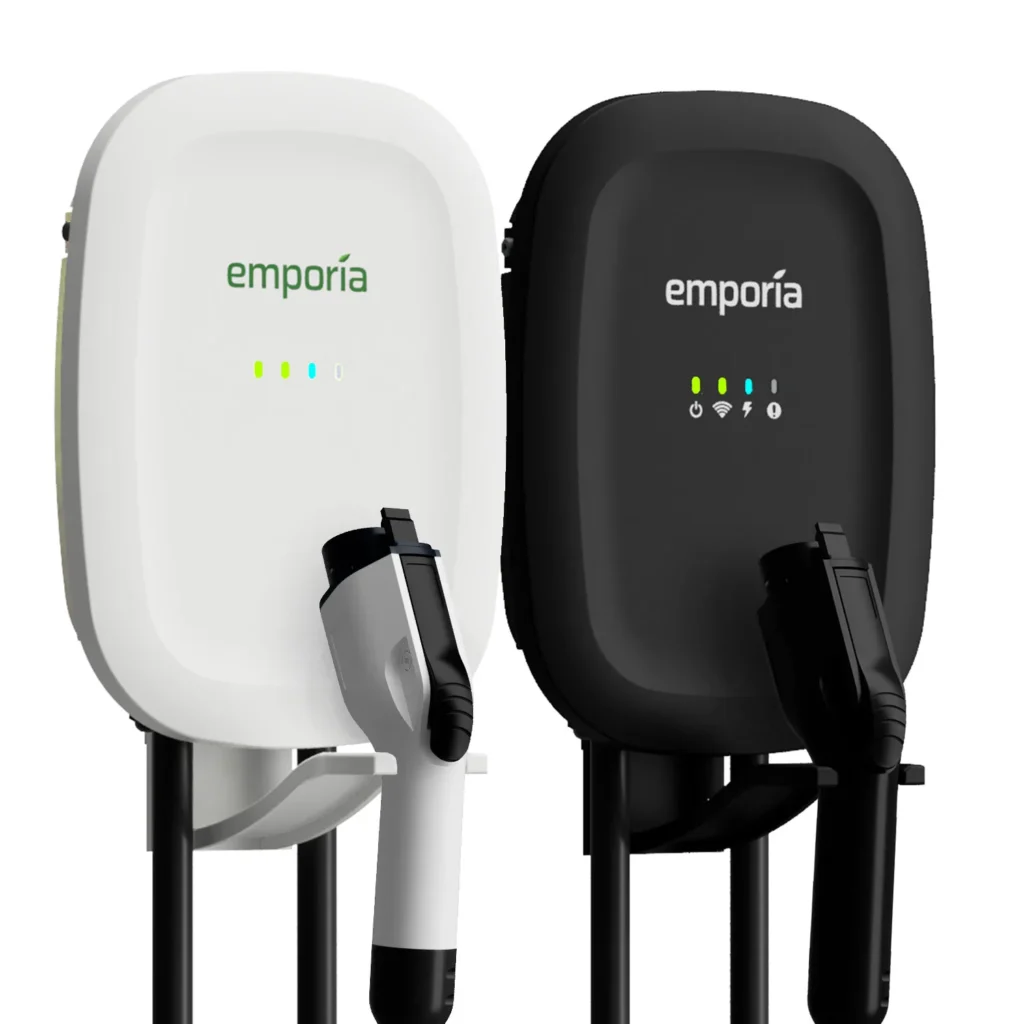
Emporia EV Charger
An affordable J1172-only option. This will likely become outdated though and will need an adapter for new (NACS) vehicles.
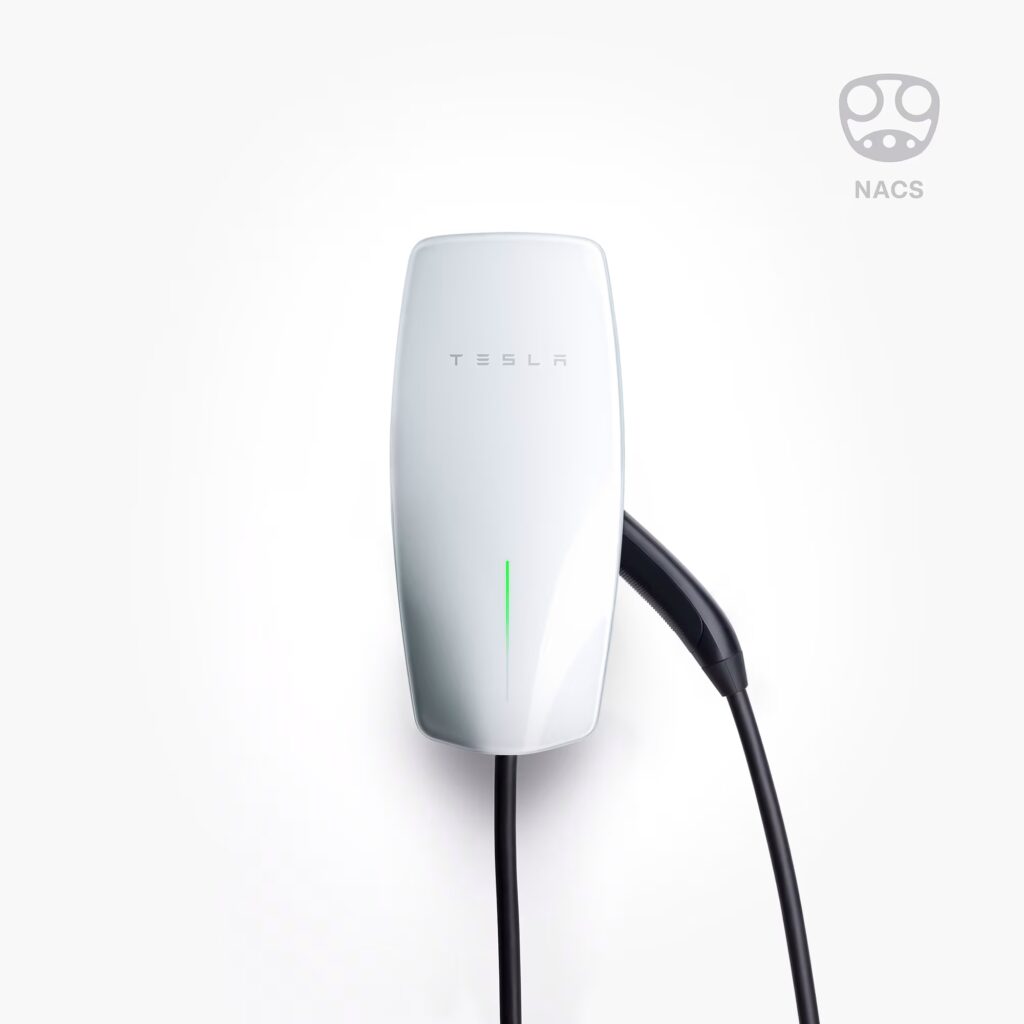
Tesla Wall Connector
A very high-quality NACS-only option. Buy this if you don’t need backward compatibility with J1772 vehicles.
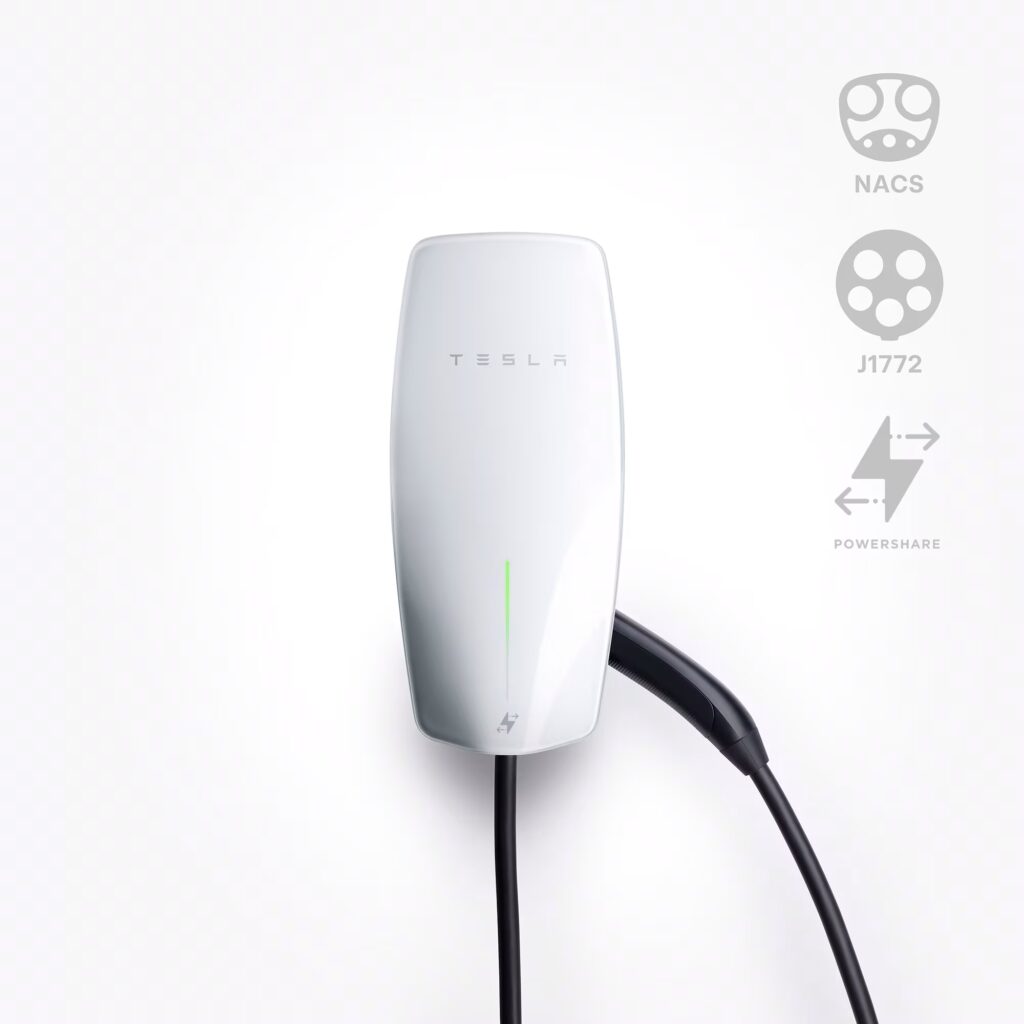
Tesla Universal Wall Connector
This device supports BOTH NACS and J1772 in one convenient package. It’s a little more expensive, but well worth it.
Take a look at some of the completed installs we’ve done:
